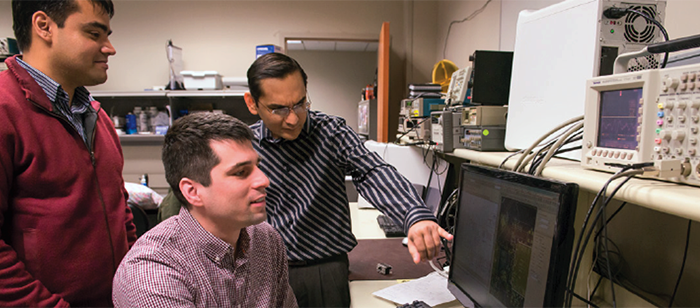
The Baltimore Sun and Washington post ran stories on efforts by the University System of Maryland to help faculty and students turn their research into growing businesses. The stories cite work being from at UMBC by CSEE faculty Nilanjan Banerjee, Ryan Robucci and Chintan Patel and their research students.
“UMBC professors Nilanjan Banerjee and Ryan Robucci relied heavily on the university to help them commercialize two types of wearable sensors they invented. One of the sensors, called RestEaze, measures leg movements during sleep, which may help identify if people have restless leg syndrome, ADHD or even cardiac problems. The other, called Inviz, is for people with limited mobility, who can use the sensor to call 911 or turn on a TV.
University and state officials helped walk the professors through the process of obtaining grants, patenting the technology and creating a business. Banerjee said the university is increasingly stressing that its researchers focus on commercializing their discoveries.
‘UMBC also definitely wants to place itself as a university that is helping the community around it as well as the state,’ Banerjee said. ‘It’s one of our responsibilities to make sure we have societal impact, and commercializing is one way of doing it.’
Resteaze is a wearable system that can non-intrusively monitor sleep quality in a home setting. It is being developed in conjunction with the Johns Hopkins University School of Medicine with funding from the TEDCO Innovation Commercialization Program, which provides funding to support the commercialization of qualified university technologies. Inviz is a low-cost gesture recognition system that uses flexible textile-based capacitive sensors that can be embedded in fabric. It is being developed with funding from the National Science Foundation and a gift from Microsoft. Both projects are collaborative efforts between of faculty and students from UMBC’s computer science and computer engineering programs.